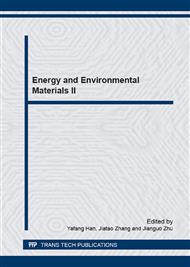p.398
p.404
p.411
p.418
p.425
p.430
p.435
p.441
p.447
Scenario Analysis of Denitration for Chinese Coal-Fired Power Generation
Abstract:
The environmental loads are made due to the natural resources and fossil fuels use and pollutants emissions by Chinese thermal power industry. To explore the realistic coal-fired power generation and its denitration strategies, the input and output of coal-fired power generation in China were identified and quantified. The scope of this paper is defined in the boundary of coal-fired electricity generation system all over China. The methodology follows the principal of ISO 14040 and ISO 14044. The functional unit is “1 kWh of electricity generated”. The inventory data of Chinese coal-fired power generation in 2009 without denitration technology applications were measured. The output data include the CO, N2O, CH4, CO2, NOx, PM and SO2 emissions. NOx emissions are the major contributor of acidification and photochemical in China. To avoid catastrophic environmental damages, the air pollution especially NOx emissions from coal-fired power plants are advised to be cut. For scenario analysis, in the assumption of 100%of selective non-catalytic reduction (SNCR) technology applications, China still has denitration potential. In the coming several decades, the SNCR technology will be decisive for the Chinese coal-fired power industry to reach deeper NOx emission reductions. However, the reduction agents of ammonia and urea usage bring ammonia slip, and extra natural resource and fossils consumption. The urea use also brings extra CO2 emissions. This limits the applications of SNCR technology to reduce NOx emissions.
Info:
Periodical:
Pages:
425-429
Citation:
Online since:
March 2015
Authors:
Keywords:
Price:
Сopyright:
© 2015 Trans Tech Publications Ltd. All Rights Reserved
Share:
Citation:


